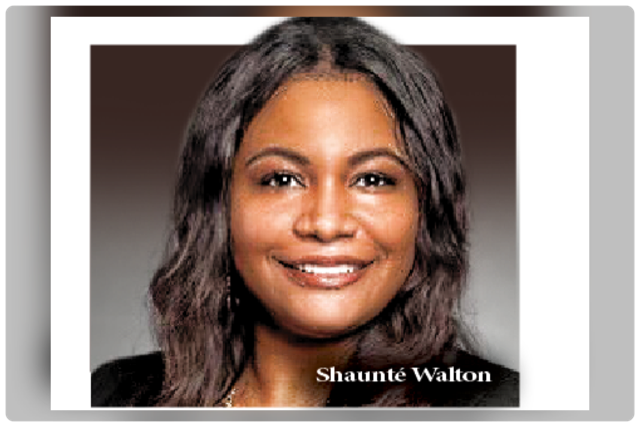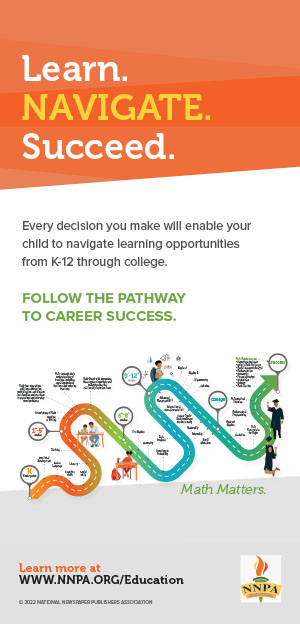Growing up in the Acreage Home community, Shaunté Walton always had a fascination with science, and knew as a kid she wanted to be a physician. “When I would go to doctors’ appointments and just listen to the doctor talk about the human body, it was so fascinating to me. I knew that’s what I wanted to do. I wanted to go into medicine,” she expressed. She spent majority of her life in the Acreage Home community and graduated from MacArthur High School. She then transitioned into college and attended Xavier University of Louisiana where she received her bachelor’s degree in microbiology. She also received her master’s degree in health systems from the University of Medicine & Dentistry of New Jersey.
When Mrs. Walton started college, going into medicine was her goal. However, when she took a microbiology course, she fell in love with it. She knew she needed more experience in learning more about viruses and bacteria, so she let the goal of medicine go. “Science and math were always my strongest courses as I progressed through education. It’s always been really fascinating and of course microbiology is really what I absolutely love.”
After college, she moved back to Houston. Her goal was to get into healthcare, but it was very challenging having a degree in science and trying to get into laboratory work. She worked for a temp agency that placed scientists into laboratory positions and served in that position for a year to get the experience needed to go into clinical work. From lab support, she then moved into her first position at Dynacare/Dynagene Laboratories, where she did clinical work, and laboratory testing specifically focused on infectious diseases.
With this experience, she was able to move into a hospital setting. She started working for Texas Children’s Hospital as a molecular microbiologist and served in that role for five years. While working at Texas Children’s Hospital, Mrs. Walton wanted to get more experience in infectious diseases in the laboratory, and she also had an interest in epidemiology. For someone to move into epidemiology, experience working in the laboratory is needed to even be considered. She mentioned, “This was interesting because primarily the individuals who were working in the hospital setting doing epidemiology were nurses. Just imagine the challenge of a person that was a non-nurse trying to get into that field. It took me about a year or so to transition into epidemiology.”
Mrs. Walton received her first job in her interested field at Memorial Herman working as an Infection Patrol Practitioner for the southwest location. From this position, she was able to transition into the work that she does now. She worked for the Memorial Herman system for a little while, and then went back to Texas Children’s Hospital to get more experience. She also worked at the Methodist Hospital in downtown Houston where she received experience in oncology and neurology. With all this knowledge, Mrs. Walton moved into a leadership position where she would oversee six hospitals in the Memorial Herman health system to ensure they had an effective infection prevention program within those hospitals.
Her life then transitioned again when she received a call for a new job opportunity. “I got a call one day from UCLA. They thought I would be a perfect match for their position as a system director in clinical epidemiology in infection prevention, and that’s when I moved to UCLA. This is where I have been currently for five years.”
At UCLA, her job is to ensure that they have a robust and effective infection prevention program of their four hospitals and over 300 ambulatory care clinics. Her team consists of 20 members that she oversees, and is responsible for doing reviews, and risk assessments, so they can determine next steps and best practices, and what to implement to keep their patients safe that visit the hospitals or ambulatory clinics. In addition, they are also concerned about the health care workers, health care providers, and visitors that enter their facilities. “Our goal is to look at everything that could potentially create a risk for an infection for everyone. There is a lot of work that goes into that and not just looking at hand hygiene.” Her team is also responsible for looking at construction projects because dust can harbor pathogens that could potentially infect others. “So, we’re at the table looking at construction projects making recommendations on how we can keep them secure and keep them from getting them sick. It is a lot of things that people don’t really think about that is my job to look at these things so that others don’t have to.”
Before the pandemic, some people had no idea of the work that Mrs. Walton does, but when the pandemic started, her department and her profession in general were in the spotlight. Since the pandemic is something that many have never experienced before, people have been living in fear, and a lot of people did not know that there were trained individuals to help keep people safe in situations like the pandemic. “It really is my job to calm people down, give them the information they need so they can make informed decisions.”
At the beginning of the pandemic, Mrs. Walton was working 20 hours a day, seven days a week, to make sure they had everything they needed in place to help protect their healthcare workers since they were the ones who had to interact with the patients that came in, and they wanted to make sure they were not taking anything home with them. She described that “All of that was really compounded in the very beginning. It was a stressful time but rewarding at the same time because this is what I trained for. I wanted to be able to exercise that knowledge and be able to pour into others so that they could feel comfortable doing their job.”
Like everyone else in the world, Mrs. Walton was impacted personally by the pandemic. She had several family members who have passed on because of this disease. She expressed, “It was tough seeing what was happening in my personal life and have to maintain that calm for everyone else even though my family was suffering with this disease.” Despite everything that has happened, Mrs. Walton reflected on how this disease has given her the opportunity to channel the knowledge she has to her community and her church stating, “I have always been a person that people can tap into a resource for everyone that has questions or various things about the pandemic.”
When discussing the current variant, Mrs. Walton compared the Omicron variant’s transmissibility to how the measles transmits, which is the “most highly infectious disease known to man”. She mentioned further how it is even more concerning how there are many individuals who are still unvaccinated. “When you look at our data at the hospitals, you are seeing that most people that are hospitalized or have passed away are those who are unvaccinated,” she illustrated. Mrs. Walton understands how people were hesitant to get vaccinated because she too was hesitant when the vaccine was first approved for the public. However, with all the data that has come available, getting vaccinated is the only way to reach the endemic phase, where the virus is in the community, but is manageable.
She makes it her goal to get people to understand the importance of vaccinations, especially in the black community. In her opinion, black people may be hesitant because of the history of African Americans in this country especially when it comes to medical challenges. She stated, “I know there is a lot of hesitancy in the black community, and I really want to get that message out to them. This is the way we need to manage the pandemic and we need everyone comfortable enough to get vaccinated. The more people who are unvaccinated, the more this virus is going to continue to have a host to create variations and its very concerning to me.”
If you are not vaccinated, Mrs. Walton strongly encourages you to get vaccinated. For those who are vaccinated, she stressed that the vaccine is not the only way to protect yourself. You can have a combination of also social distancing and wearing a mask. As she closed, “That is going to help us curve the pandemic.”








